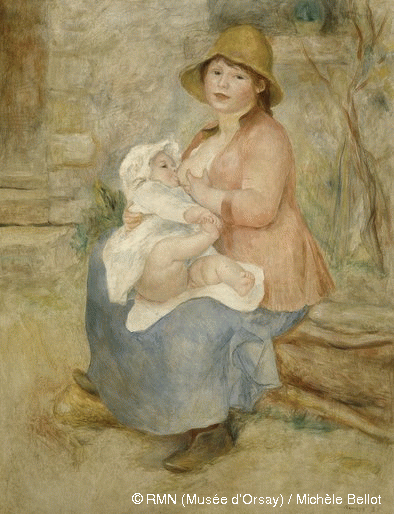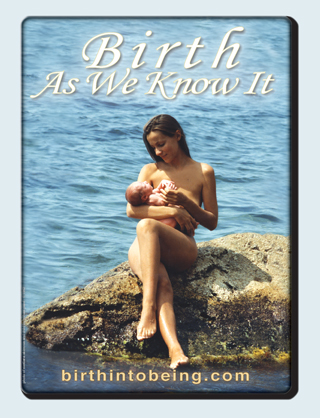by Nicette Jukelevics, author of
Understanding the Dangers of Cesarean Birth: Making Informed Decisions
at www.DangersOfCesareanBirth.com
For years researchers have largely focused on the technical aspects and “appropriate” rate of cesarean section: the surgical procedure. However, birth by cesarean can have powerful psychological effects on women and their ability to adjust to motherhood.
A woman’s experience of her cesarean birth and her perceptions of the event, are influenced by multiple complex factors: The reason for which the cesarean was performed, her cultural values, her beliefs and anticipations of the birth, possible traumatic events in her life, available social support, and her personal sense of control, are only a few (Cummings, 1988; Cranley, 1983; Marut and Mercer, 1979; Sheppard-McLain1985).
Many women recover fully physically and emotionally from a cesarean birth, others do not. Little attention has been paid to the psychological impact that a surgical birth may have on women’s emotional well being. Their personal experiences have been at times trivialized, misunderstood, or ignored by the medical community.
That birth by cesarean can have an adverse psychological impact on some mothers was already a concern in the early 1980’s as the cesarean rate in the United States was climbing rapidly (Lipson and Tilden, 1980). Anecdotal reports and personal testimonies have helped to increase awareness of the negative psychological repercussions that some women experience following a cesarean birth. (Baptisti-Richards 1988; Madsen, 1994;Pertson and Mehl, 1985; Wainer-Cohen and Estner 1983).
Research suggests that the negative psychosocial effects of cesareans can be significant and far-reaching for some women (Mutryn, 1993). Several reports also indicate that a cesarean birth, especially one that was not anticipated, can put some women at increased risk for depression and post-traumatic stress.
Cesarean Birth and Postpartum Depression
Karen Erlichman, LCSW a faculty member in the Obstetrics and Gynecology Department at the University of San Francisco works with women who have had a difficult pregnancy or a traumatic birth. In her presentations to medical professionals working with birthing women, she tries to convey an important message- that birth by cesarean is an emotional experience, not just a medical procedure. (Erlichman, 1999). Women’s experience and perceptions of their birth may have very negative consequences despite good medical outcomes.
A British study screened expectant mothers for emotional well being at 30 and 36 weeks gestation and again at 6 weeks after they gave birth. Results indicated that a disproportionately large number of women who had a cesarean birth reported symptoms of clinical depression. Women who felt they were “not in control” of the events or felt they received medical interventions that were not necessary were at higher risk for depressed mood (Green, 1990).
Australian researchers looked at risk factors for postpartum depression in women expecting their first child during the first trimester, and at one month, 3 months and at 6 months postpartum. Compared to women who had a spontaneous vaginal delivery and women who had a forceps delivery, 46% of the women who had an emergency cesarean were more than six times more likely to develop symptoms of depression at three months postpartum. The increased risk for postpartum depression could not be attributed to personality dysfunction. Had the pain of the physical recovery been the cause of the depression, the authors speculated, one would have been more likely to see a difference at one month rather than at 3 months after the cesarean. The women’s perceptions of the emergency cesarean had lowered their self-esteem, left them with a sense of failure, loss of control and disappointment. (Boyce and Todd, 1992).
When 800 women who gave birth in Victoria, Australia were screened for multiple factors associated with postpartum depression eight to nine months after birth researchers discovered significant results. A careful analysis established a significant association between obstetric procedure and subsequent depression. Women who gave birth with forceps or by cesarean were more likely to exhibit symptoms of clinical depression. When examining the relationship between perinatal complications in a previous pregnancy and depression following the current birth, a prior cesarean delivery was identified as a significant factor. Women who had a prior cesarean were 2 ½ times more likely to suffer from depression after a subsequent birth. (Brown et al 1994).
Cesarean Birth as Trauma
Women who experience problems with infertility treatments, miscarriage, abortion or an ectopic pregnancy sometimes suffer from depression and/or post traumatic stress. Dr. J. Laurence Reynolds, a faculty member in the Department of Family Medicine, University of Western Ontario, Canada explains that because childbirth can be an extremely painful experience, often associated with feelings of being out of control. It is understandable that some women may experience the birth itself as a psychological trauma. (Reynolds, 1997).
Post-traumatic stress disorder (PTSD) is currently defined as a psychiatric disorder that may develop from being exposed to an actual injury or death or from the perceived threat of injury or death. Individuals with post-traumatic stress experience feelings of intense fear, helplessness, or horror in response to the traumatic event. Emotional reactions can have significant and long-lasting effects. Stress response symptoms include:
- intrusive thoughts and re-experiencing of the event,
- avoidance of places or people that might trigger a reminder of the event,
- numbing of emotions and general responsiveness
- a sense of hypervigilance or increased arousal.
Studies suggest that post-traumatic stress is a much more common psychological response to an unexpected cesarean than expected. Women’s feelings of confidence and security on arriving at the hospital quickly change to ones of fear and anxiety when they learn they are going to have a cesarean. Almost one half of the 53 women who gave birth by emergency cesarean in a Swedish hospital were afraid of injuries their baby might sustain or afraid their baby might not survive. About one quarter of the women feared for their life or were convinced they would be seriously harmed. Some were afraid they would not wake up from the general anesthesia, and thirteen per percent experienced a frightening loss of contact with reality. Most of the mothers experienced a deep sense of loss and grief. (Ryding, et al December 1998)
When comparing women’s reactions following uncomplicated vaginal birth, instrumental delivery, and elective cesarean, women who had an emergency cesarean reported more symptoms of post traumatic stress both within the first few days after birth and at one month postpartum (Ryding, et al September 1998).
Some women experience significant adverse reactions to their cesarean birth as long as five years later A British study compared a group of women who had a primary cesarean delivery with women who had an uncomplicated vaginal birth and a group of women who had an assisted delivery with the use of forceps or vacuum extractor. Women who had multiple pregnancies, stillbirths, neonatal deaths, and home births were excluded from the study.
The group of women who gave birth with forceps or a vacuum extractor and women who gave birth by cesarean were more likely to have had a negative birth experience. Of the women who gave birth by cesarean 82.2% were recorded as an emergency and 17.8% as an elective operation. Over 80% had general anesthesia for the cesarean. The women who had an assisted delivery and those who gave birth by cesarean were much more disappointed. Although five years had passed since they gave birth, these mothers expressed dominant feelings of fear and anxiety about their experience and were more reluctant to become pregnant again (Jolly, J. et al 1999).
A cesarean can be a life saving procedure, but recent data shows that a first cesarean puts women at increased risk for medical complications in a subsequent pregnancy and birth (Rageth, 1999). Given the evidence that a cesarean may also put some women at increased psychological risk, women should be encouraged and supported in their efforts to avoid a cesarean.
Some Women’s Feelings about Cesarean Birth
“My daughter’s birth was two years ago, it was extremely traumatic. I have been trying to process these feelings that come up, and I thought I had, but recently I have been having nightmares about the cesarean reoccurring with this new baby. I am afraid the medical staff will just intervene and I will be powerless to say anything.”
“I was in such pain and terror that I didn’t care that I was having a baby. I just didn’t care. I couldn’t find a way to attach myself to my son. It was horrible, I was so detached that I didn’t even care that my husband decided on the name. I had no desire to even think about it.”
“If I need another cesarean, I don’t want to be awake this time. I don’t want to know that they are slicing me open with a knife, I don’t want to hear that suction noise, the cold clinking of the surgical instruments.”
“I was awake during my cesarean, but I really didn’t feel like I ‘was there.’ The doctor brought my baby to me, but I really didn’t have any connection to this baby. It’s been twelve weeks, but it’s still difficult to associate him with the cesarean. I had no euphoria, didn’t feel much joy. For many weeks after I kept dreaming that I was on my way to the hospital to give birth to him.”
“Because I had a previous c-section…a c-section was arranged…As I was wheeled away…I felt like I was an animal led to the slaughter with no mind of my own and doing as I was told…No real consideration was given to how I felt. I was lying there having the epidural inserted, screaming out inside, why, why, I don’t want this.”
References Cited
Baptisti-Richards 1988. Healing the Couple. Midwifery Today 1(7):22-25.
Boyce, P.M. and Todd, A.L. 1992. Increased risk of postnatal depression after emergency cesarean section. Medical Journal of Australia, 157(3):172-174.
Brown, s. et al 1994. Birth events, birth experiences and social differences in postnatal depression. Australian Journal of Public Health 18(2):176-184.
Cranley, M.S. et al 1983. Perceptions of vaginal and cesarean deliveries. Nursing Research 31(1):10-15.
Cummings, L.H. 1988. Views of cesarean birth among primiparous women of Mexican origin in Los Angeles. Birth 15(3):164-170.
Erlichman, Karen, LCSW. Personal communication, 6/29/99.
Jolly, J. et al 1999. Subsequent obstetric performance related to primary mode of delivery. British Journal of Obstetrics and Gynaecology 196(3):227-232.
Lipson, J.G. and Tilden, V.P. 1980. Psychological integration of the cesarean birth experience. American Journal of Orthopsychiatry 50(4):598-609.
Madsen, L. 1994. Rebounding from Chidbirth:Toward Emotional Recovery. Westport Connecticut: Bergin & Garvey.
Marut, J. and Mercer, R. 1979. Comparison of primiparas’ perceptions of vaginal and cesarean births. Nursing Research 28:260-266.
Mutryn, C.S. 1993. Psychosocial impact of cesarean section on the family: A literature review. Social Science and Medicine 37(10):1271-1281.
Peterson, G. and Mehl, L.1985. Cesarean Birth Risk and Culture. Berkeley:Mindbody Press.
Reynolds, J. L. 1997. Post-traumatic stres disorder after childbirth:the phenomenon of traumatic birth. Canadian Medical Association Journal 156 (6):831-835.
Ryding, E.L. et al 1999. Experiences of emergency cesarean section:a phenomenological study of 53 women. Birth 25(4):246-251.
Ryding, E.L. et al 1998. Psychological impact of emergency cesarean section in comparison with elective cesarean section, instrumental and normal vaginal delivery. Journal of Psychosomatic Obstetrics and Gynaecology 19(3)135-144.
Wainer-Cohen, N. and Estner, L. 1983. Silent Knife. Westport Connecticut:Bergin & Garvey.
This article is provided with the gracious permission of its author:
Nicette Jukelevics, MA, ICCE, VBAC.com
Center For Family
24050 Madison St. Suite 200, Torrance, CA 90505
(310) 375-3141




